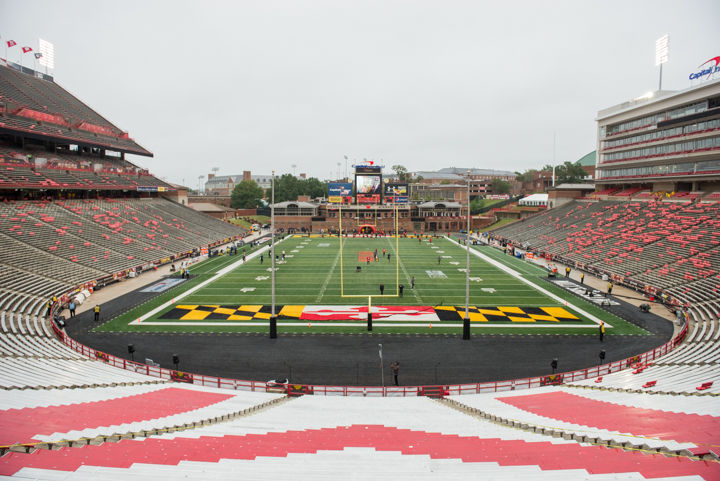
(Photo courtesy diamondbackonline.com)

(Photo courtesy diamondbackonline.com)
 Bucks
BucksIn 2014, the University of Maryland and Rutgers University announced plans to leave the Atlantic Coast Conference and join the Big Ten, citing the long-term financial benefits as a major motivating factor. A Capital News Service analysis of Big Ten schools' athletic department finances found that Big Ten schools consistently generate more net income than other NCAA programs, while relying on significantly less in subsidies from state governments and university budgets to fund athletic programs. But Maryland and Rutgers, the analysis found, are exceptions. Both schools remain very dependent on state and student subsidies to fund athletic programs. Here are four things you need to know about our analysis of data collected by: The Chronicle of Higher Education, Huffington Post report and USA Today.
Maryland and Rutgers, the two newest additions to the Big Ten, joined the conference as the two lowest grossing programs among the thirteen public Big Ten schools (data for Northwestern University, a private school, was not available), except for Purdue University. Rutgers and Maryland, historically, have relied heavily on state and institutional subsidizies just to meet these bottom-tier income levels. In 2014, subsidies accounted for 47.4 percent of Rutgers' and 24.7 percent of Maryland's net revenue. To compare, all other Big Ten programs took in 6.3 percent or less in subsidies. Five Big Ten programs received no subsidies in 2014.
Without the help of hefty subsidies, both the Big Ten and the ACC schools, taken as a whole, would have ended 2014 with a net income -- revenue minus expenses, commonly known as profit -- in negative territory. Without Maryland and Rutgers -- which are both heavily dependent on subsidies -- the Big Ten schools made an overall profit of more than $11 million before subsidies.